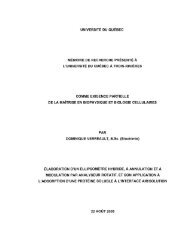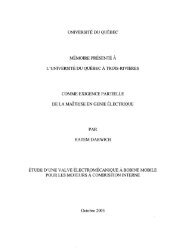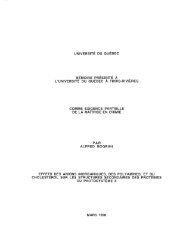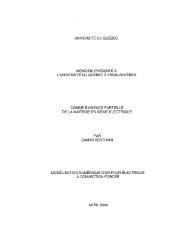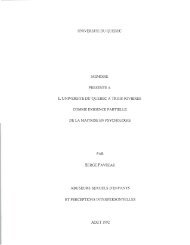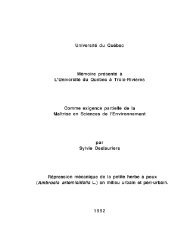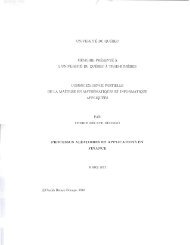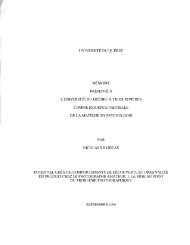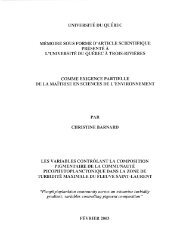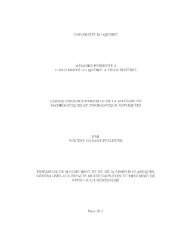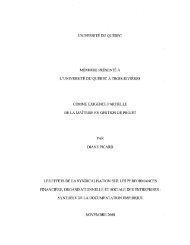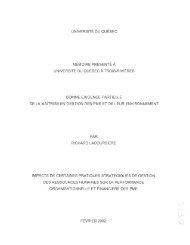Biomanipulation du meunier noir (Catostomus commersoni)
Biomanipulation du meunier noir (Catostomus commersoni)
Biomanipulation du meunier noir (Catostomus commersoni)
Create successful ePaper yourself
Turn your PDF publications into a flip-book with our unique Google optimized e-Paper software.
3.5.2 Fish abundance and biomass<br />
With one exception (BPUE; Lake Claudette), the CPUE and BPUE of white<br />
sucker populations (alI ages) decreased significantly <strong>du</strong>ring white sucker mass removal.<br />
The lack of significant change in BPUE of white sucker in Lake Claudette might be <strong>du</strong>e<br />
to their higher growth compensation folIowing a<strong>du</strong>lts' removal. The BPUEs of the<br />
species targeted by the removals are susceptible to be maintained when part of the<br />
resource is used by the remaining indivi<strong>du</strong>als (Hanson and Leggett 1986, Colby et al.<br />
1987). The mass removal of a<strong>du</strong>lt fish should result in an increase in recruitment of alI<br />
species because of a competitive re1ease (Meronek et al. 1996). The recruitment of 1 +<br />
white sucker also increased in lakes Claudette, Mastigou and Des Îles, although not<br />
always significantly. The significant increase or upward tendencies in CPUE of 1 + white<br />
sucker are related to the intensity of mass removal. After 3 years of mass removal,<br />
Brodeur et al. (2001) did not observe any response in white sucker recruitment in lakes<br />
Claudette, Mastigou and Des Îles after the removal of 77.3%, 55.9% and 70.4%<br />
(respectively) of the initial white sucker biomass. However, 3 to 6 years later, increases<br />
in mass removal intensity translated into increases in white sucker recruitment.<br />
During white sucker mass removal, CPUE and BPUE of brook trout (alI ages)<br />
tended to increase only in Lake Claudette. In contrast, the recruitment of 1 + brook trout<br />
significantly increased in lakes Mastigou and Claudette, <strong>du</strong>ring the period of white<br />
sucker mass removal.<br />
The BPUE of white sucker (alI ages) increased significantly three years after the<br />
cessation of mass removal only in Lake Mastigou. In contrast, CPUE and BPUE of 1 +<br />
white sucker tended to increase in both Lake Mastigou and Lake Claudette. In spite of<br />
intense white sucker removal (80% of mature indivi<strong>du</strong>als), Schneider and Crowe (1980)<br />
reported that white sucker populations were back to their initial densities 3 to 5 years<br />
after the end ofmass removal. Johnson (1977) also noted that white sucker populations<br />
were able to reach their initial densities 5 to 7 years after the end of mass removal. These<br />
70



